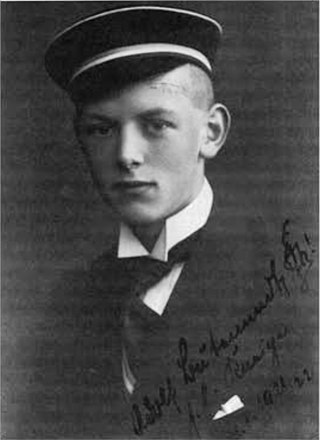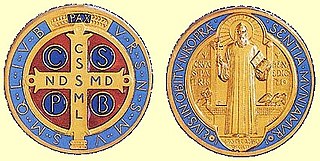Related Research Articles

Max Ernst was a German painter, sculptor, printmaker, graphic artist, and poet. A prolific artist, Ernst was a primary pioneer of the Dada movement and Surrealism in Europe. He had no formal artistic training, but his experimental attitude toward the making of art resulted in his invention of frottage—a technique that uses pencil rubbings of textured objects and relief surfaces to create images—and grattage, an analogous technique in which paint is scraped across canvas to reveal the imprints of the objects placed beneath. Ernst is noted for his unconventional drawing methods as well as for creating novels and pamphlets using the method of collages. He served as a soldier for four years during World War I, and this experience left him shocked, traumatised and critical of the modern world. During World War II he was designated an "undesirable foreigner" while living in France.

Max Carl Friedrich Beckmann was a German painter, draftsman, printmaker, sculptor, and writer. Although he is classified as an Expressionist artist, he rejected both the term and the movement. In the 1920s, he was associated with the New Objectivity, an outgrowth of Expressionism that opposed its introverted emotionalism. Even when dealing with light subject matter like circus performers, Beckmann often had an undercurrent of moodiness or unease in his works. By the 1930s, his work became more explicit in its horrifying imagery and distorted forms with combination of brutal realism and social criticism, coinciding with the rise of nazism in Germany.

Max Liebermann was a German painter and printmaker, and one of the leading proponents of Impressionism in Germany and continental Europe. In addition to his activity as an artist, he also assembled an important collection of French Impressionist works.

Adolf Friedrich Johann Butenandt was a German biochemist. He was awarded the Nobel Prize in Chemistry in 1939 for his "work on sex hormones." He initially rejected the award in accordance with government policy, but accepted it in 1949 after World War II. He was President of the Max Planck Society from 1960 to 1972. He was also the first, in 1959, to discover the structure of the sex pheromone of silkworms, which he named bombykol.

Erich Heckel was a German painter and printmaker, and a founding member of the group Die Brücke which existed 1905–1913. His work was part of the art competitions at the 1928 Summer Olympics and the 1932 Summer Olympics.

The Pinakothek der Moderne is a modern art museum, situated in central Munich's Kunstareal.
The Kunstareal is a museum quarter in the city centre of Munich, Germany.

The Lenbachhaus is a building housing the Städtische Galerie art museum in Munich's Kunstareal.

Stephan Reimertz is a German poet, essayist, novelist and art historian.

Gabriel Cornelius Ritter von Max was a Prague-born Austrian painter, and professor of history painting at the Royal Academy of Fine Arts. He was also a collector of anthropological artifacts.

The Militant League for German Culture, was a nationalistic anti-Semitic political society during the Weimar Republic and the Nazi era. It was founded in 1928 as the Nationalsozialistische Gesellschaft für deutsche Kultur by Nazi ideologue Alfred Rosenberg and remained under his leadership until it was reorganized and renamed to the National Socialist Culture Community in 1934.

Peter Lenz (1832–1928), afterwards Desiderius Lenz, was a German artist who became a Benedictine monk. Together with Gabriel Wüger, he founded the Beuron Art School.

The Museum Barberini is an art museum in Potsdam opened in 2017. Its exhibitions range from the so-called Old Masters to contemporary art, with an emphasis on impressionist painting. Centered around works from the collection of its founder and patron Hasso Plattner, the Barberini presents three temporary exhibitions per year, featuring loans from international museums and private collections. Academic conferences serve to prepare these exhibitions. At the same time, shorter gallery displays – the so-called “art histories” – put works from the collection into constantly shifting contexts. The museum aims to offer a diverse programme of events and educational activities as well as digital offers like the Barberini App and the 4K Smart Wall in the museum.

Minna Beckmann-Tube was a German painter and opera singer. She is best known as the first wife of the painter and draftsman Max Beckmann.

The German Society for Christian Art is a "supra-regional, not-for-profit and independent cultural institution" based in Munich.
The Paul-Ernst-Gesellschaft is a registered association dedicated to the cataloguing and preservation of the literary works of Paul Ernst (1866–1933). The society was founded directly after Ernst's death in 1933 and re-founded after the Second World War in 1956. It is recognised as worthy of cultural and scientific support and open to natural persons and corporations.

Curt Glaser was a German Jewish art historian, art critic and collector who was persecuted by the Nazis.

Erhard Göpel was a German art historian and high level Nazi agent who acquired art, including looted art, for Hitler’s Führermuseum.
Günther Franke was a German gallery owner, art dealer and collector.
Barbara Göpel, née Barbara Malwine Auguste Sperling was a German art historian.
References
- ↑ Max Beckmann Archiv, Kunstareal
- ↑ Fluchtpunkt Paris, Süddeutsche Zeitung, 12 September 2017 (German)
- ↑ Max Beckmann Gesellschaft: 1953-1962, Der Gesellschaft, 1963 (German)
- ↑ Max Beckmann Archive Official Website (German)
- ↑ Max Beckmann Archiv. Erwerbungen 1985-2008, Munich, 2008 (German)
- ↑ Max Beckmann Archiv, Kunstareal
- ↑ Max Beckmann Archiv, Arts in Exile
- ↑ München, Max Beckmann Archiv, arthistoricum.net (German)